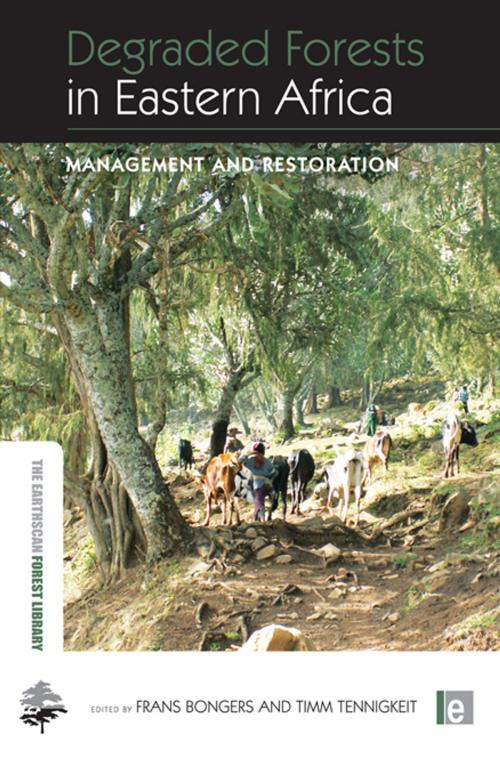Degraded Forests in Eastern Africa
Management and Restoration
Nonfiction, Science & Nature, Science, Earth Sciences, Geography| Author: | ISBN: | 9781136532351 | |
| Publisher: | Taylor and Francis | Publication: | September 23, 2010 |
| Imprint: | Routledge | Language: | English |
| Author: | |
| ISBN: | 9781136532351 |
| Publisher: | Taylor and Francis |
| Publication: | September 23, 2010 |
| Imprint: | Routledge |
| Language: | English |
Forest degradation as a result of logging, shifting cultivation, agriculture and urban development is a major issue throughout the tropics. It leads to loss in soil fertility, water resources and biodiversity, as well as contributes to climate change. Efforts are therefore required to try to minimize further degradation and restore tropical forests in a sustainable way.
This is the first research-based book to examine this problem in East Africa. The specific focus is on the forests of Ethiopia, Tanzania and Uganda, but the lessons learned are shown to be applicable to neighbouring countries and others in the tropics. A wide range of forest types are covered, from dry Miombo forest and afromontane forests, to forest-savannah mosaics and wet forest types. Current management practices are assessed and examples of good practice presented. The role of local people is also emphasized. The authors describe improved management and restoration through silviculture, plantation forestry and agroforestry, leading to improvements in timber production, biodiversity conservation and the livelihoods of local people.
Forest degradation as a result of logging, shifting cultivation, agriculture and urban development is a major issue throughout the tropics. It leads to loss in soil fertility, water resources and biodiversity, as well as contributes to climate change. Efforts are therefore required to try to minimize further degradation and restore tropical forests in a sustainable way.
This is the first research-based book to examine this problem in East Africa. The specific focus is on the forests of Ethiopia, Tanzania and Uganda, but the lessons learned are shown to be applicable to neighbouring countries and others in the tropics. A wide range of forest types are covered, from dry Miombo forest and afromontane forests, to forest-savannah mosaics and wet forest types. Current management practices are assessed and examples of good practice presented. The role of local people is also emphasized. The authors describe improved management and restoration through silviculture, plantation forestry and agroforestry, leading to improvements in timber production, biodiversity conservation and the livelihoods of local people.















